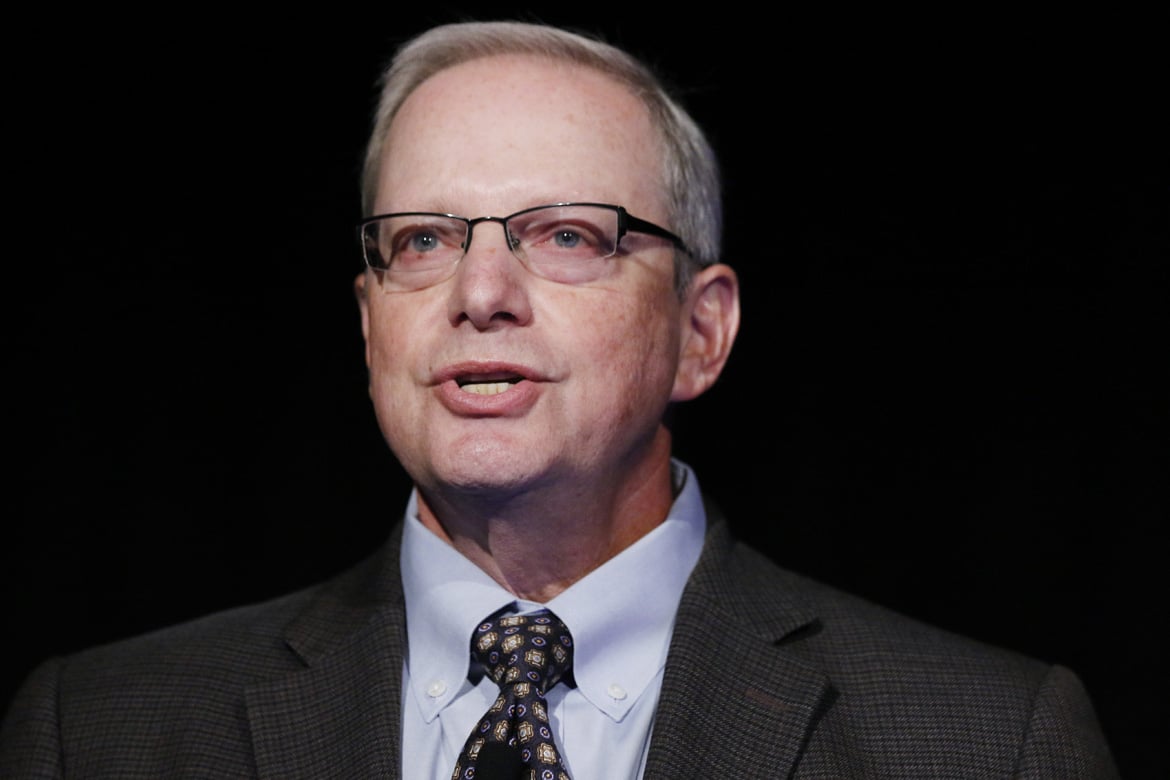One-half of the physician workday is gobbled up by administrative work, often associated with electronic health records (EHRs). Yet Robert Wachter, MD, chair of the Department of Medicine at the University of California, San Francisco School of Medicine, foresees a day when EHRs—and other health information technology (IT) used to its fullest extent—actually make physicians’ lives easier and improve care.
“This is a remarkable time to be in medicine ... because we are an industry being transformed,” Dr. Wachter said at the American Conference on Physician Health, co-sponsored by the AMA, Mayo Clinic and Stanford Medicine. Dr. Wachter is a general internist, hospitalist and author of The New York Times science bestseller, The Digital Doctor: Hope, Hype and Harm at the Dawn of Medicine’s Computer Age.
Less than a decade ago, only 10 percent of hospitals and physician practices had EHRs. But today, 90 percent use EHRs. For today’s health care leaders, the biggest concern is the pressure to improve value, meaning the quality of care divided by its cost. But, predicts Dr. Wachter, a decade from now, the biggest issue will be the digital transformation of medicine.
“I can’t think of an industry 15 years after widespread digitization that wasn’t turned upside down by it,” he said at the conference in San Francisco, mentioning the disruptive examples of Uber and Amazon. “The New York Times would have gone out of business if they hadn’t figured out a digital strategy.”
While Dr. Wachter said he does not think medicine will experience quite the same digital disruption as the newspaper industry, he does believe that health care is in the middle of a huge transformation.
Adaptive, not technical change
According to Dr. Wachter, the digitization of health care was approached in the wrong way. Instead of appreciating that computerization needed to be approached as adaptive change, the medical field took a technical approach.
“What we got wrong is that this is the mother of all adaptive changes—problems that require people themselves to change,” he said. He quoted from Harvard’s Ronald Heifetz, MD, who said that in adaptive change, “the people are the problem and the solution. Leadership is about mobilizing and engaging them with the problem, rather than trying to entice them to go off and solve it on their own.”
“In health care, we failed to appreciate this,” Dr. Wachter said, “and now it’s important to go back to square one.”
“How do we engage our people with the workflow, communications and the technology to get it right?” Dr. Wachter asked. “A lot of it is going to be local—what might work well for Mayo Clinic may not work for Stanford and may not work at your small office practice.”
“That’s why engagement of the front-line people is so crucial,” he added. “But we spend no time, energy or resources on this when we naively labelled health IT as a technical problem.”
Medicine is early in its digital journey. And while it might not feel that way if a hospital or physician practice has been struggling with EHRs for several years, Dr. Wachter believes that in the grand scheme of things it is still really early in the transformation process.
The four stages of health IT
When looking at the implementation of EHRs and health IT, Dr. Wachter believes there are four stages that hospitals and physician practices must go through.
- Getting rid of paper charts and digitizing the records.
- All the parts need to get connected. For example, interoperability across all systems holding patient information—such as outpatient and inpatient EHRs, imaging systems and more—have to be connected.
- connecting the EHR vendor’s inpatient system to the outpatient system in the physician’s office.
- Doing something useful with the data physicians are entering.
- Converting these insights into tools and actions that improve value.
“As I look at American medicine today, we’ve largely done No. 1, and mostly not yet done No. 2,” he said. “I think we’ve done virtually nothing on gleaning meaningful insights from the data and converting these insights into actions that improve value.”
Even after all this “doom and gloom,” Dr. Wachter remains hopeful and optimistic that this will turn out OK.
“The promise was always that things would get better,” he said. “When you look at the time it has taken in other industries to go from computerization to marked improvements in productivity and quality, on average it takes about 10 years. I’m guessing health care will take more like 15 to 20 years because we are highly regulated and decentralized.”
The AMA STEPS Forward™ series of practice-transformation modules offers concrete advice to help physician practices and health care organizations tackle health IT challenges such as EHR purchasing and implementation, EHR in-basket restructuring and team documentation. Several of these modules have been developed from the generous grant funding of the federal Transforming Clinical Practices Initiative (TCPI), an effort designed to help clinicians achieve large-scale health transformation through TCPI’s Practice Transformation Networks.
The AMA, in collaboration with TCPI, is providing technical assistance and peer-level support by way of STEPS Forward resources to enrolled practices. The AMA is also engaging the national physician community in health care transformation through network projects, change packages, success stories and training modules.
To ensure new digital health solutions facilitate effective care and relationships between patients and physicians, the AMA brings the physician voice to innovators and entrepreneurs. By recognizing the key challenges physicians face when implementing health IT and the increase of direct-to-consumer digital health apps, the AMA aims to help physicians navigate and maximize technology for improved patient care and professional satisfaction.
The AMA is focused on influencing health IT with the goal of enhancing patient-centered care, improving health outcomes and accelerating progress in health care.




